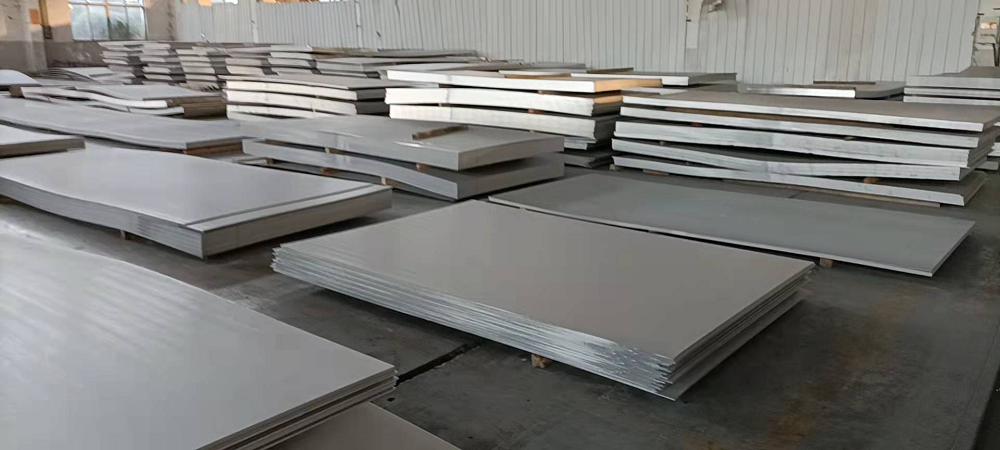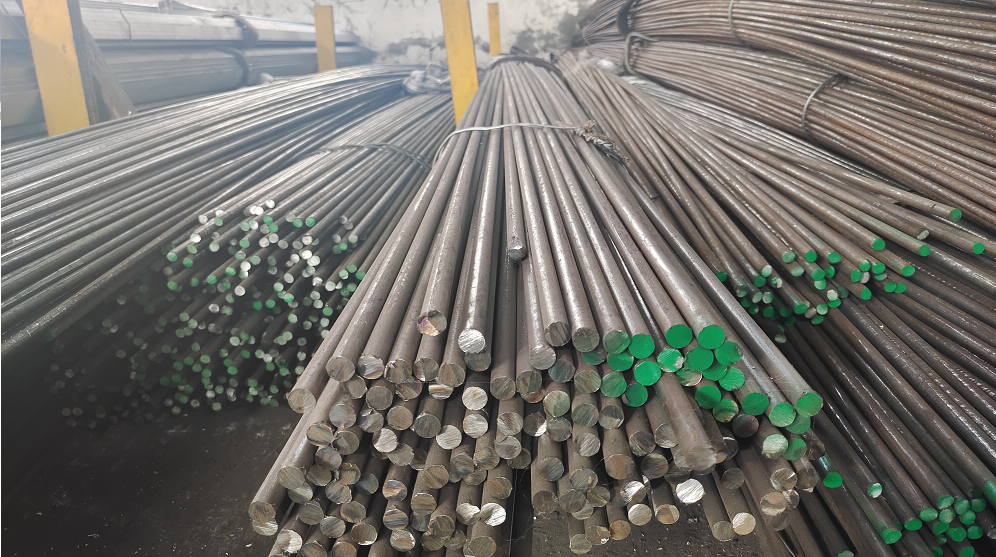Oțelul inoxidabil duplex se referă la un material a cărui microstructura este compusă din ferită și austenită, fiecare reprezentând aproximativ 50%. În utilizare efectivă, este mai potrivit ca una dintre faze să fie cuprinsă între 40-60%.
Conform caracteristicilor structurii în două faze, prin controlul corect al compoziției chimice și al procesului de tratare a căldurii, rezistența excelentă și sudabilitatea oțelului inoxidabil austenitic sunt combinate cu rezistența la stresul mai mare și rezistența la coroziune a oțelului inoxidabil feritic, ceea ce face ca oțelul inoxidabil duplex să fie un tip de oțel care combină o rezistență excelentă la coroziune, o rezistență ridicată și o prelucrare ușoară și o fabricare ușoară. Proprietățile lor fizice sunt între oțelul inoxidabil austenitic și oțelul inoxidabil feritic, dar mai aproape de oțelul inoxidabil feritic și oțelul carbon. Rezistența la pittingul clorurii și coroziunea crevice a oțelului inoxidabil duplex este legată de conținutul de crom, molibden și azot. Rezistența sa la coroziunea de pitting și crevice poate fi similară cu cea a 316 oțel inoxidabil, sau mai mare decât cea a oțelului inoxidabil pentru apa de mare, cum ar fi 6%Mo austenitic din oțel inoxidabil. Toate oțelurile inoxidabile duplex sunt semnificativ mai rezistente la fisurarea coroziunii stresului clorurii decât oțelurile inoxidabile austenitice din seria 300, iar rezistența lor este, de asemenea, mult mai mare decât oțelurile inoxidabile austenitice, în timp ce prezintă o plasticitate și o duritate bună.
Diverse forme de produs din oțel inoxidabil duplex: plăci și conducte cu benzi - conducte sudate și țevi fără probleme Fitings Fitings și flanșe tije și fire
Oțelul inoxidabil duplex poate fi, în general, împărțit în patru categorii:
Unul: tip de aliaj scăzut, un grad reprezentativ UNSS32304, oțelul nu conține molibden, PREN: 24-25, poate înlocui AISI 304 sau 316 în ceea ce privește rezistența la coroziune a stresului.
Două: tip de aliaj mediu, un grad reprezentativ UNSS31803, PREN: 32-33, rezistența la coroziune este între AISI316L și 6%Mo+N din oțel inoxidabil austenitic.
Trei: tip de aliaj ridicat, care conține în general 25% CR, conține, de asemenea, molibden și azot, unele conțin și cupru și tungsten, gradele standard sunt UNSS32550, PREN: 38-39, rezistența la coroziune este mai mare de 22% CR Duplex Oțel inoxidabil.
Patru: tipul de oțel inoxidabil super duplex, care conțin molibden ridicat și azot, gradele standard sunt UNSS32750, unele conțin și tungsten și cupru, pren> 40, pot fi utilizate în condiții medii dure, cu o bună rezistență la coroziune și proprietăți mecanice cuprinzătoare, comparabile cu oțel inoxidabil super -austenitic. (Notă: PREN: Valoarea echivalentă a rezistenței la rezistență)
Compoziție chimică Principalele elemente de aliere ale oțelului duplex sunt Cr, Ni, Mo și N. Printre ele, CR și MO sunt utilizate pentru a crește conținutul de ferită, în timp ce Ni și N sunt elemente de stabilizare a austenitei. Unele grade de oțel au, de asemenea, elemente precum Mn, Cu și W. Cr, Ni și MO pot îmbunătăți rezistența la coroziune. Rezistența sa la coroziunea pitică și crevice este deosebit de bună în mediile care conțin clorură.
Avantajele oțelului inoxidabil duplex
1. Comparativ cu oțelul inoxidabil austenitic
1) Rezistența la randament este mai mult decât dublă față de oțelul inoxidabil austenitic obișnuit și are o plasticitate și o duritate suficientă necesară pentru formare. Grosimea rezervoarelor de depozitare sau a vaselor sub presiune din oțel inoxidabil duplex este cu 30-50% mai mică decât cea a oțelului inoxidabil austenitic utilizat în mod obișnuit, care este favorabil reducerii costurilor.
2) Are o rezistență excelentă la fisurarea coroziunii stresului, în special în mediile care conțin ioni de clorură. Chiar și oțelul inoxidabil duplex cu cel mai mic conținut de aliaj are o rezistență mai mare la fisurarea coroziunii de stres decât oțelul inoxidabil austenitic. Coroziunea de stres este o problemă proeminentă că oțelul inoxidabil austenitic obișnuit este dificil de rezolvat. 3) Rezistența la coroziune a celui mai frecvent oțel inoxidabil duplex 2205 utilizat în multe medii este mai bună decât cea a oțelului inoxidabil austenitic obișnuit 316L, iar oțelul inoxidabil Super Duplex are o rezistență la coroziune extrem de mare. În unele medii, cum ar fi acidul acetic și acidul formic, poate chiar înlocui oțelul inoxidabil austenitic din aliaj și chiar aliaje rezistente la coroziune. 4) Are o rezistență la coroziune locală bună. În comparație cu oțelul inoxidabil austenitic cu același conținut de aliaj, rezistența la coroziune a uzurii și rezistența la oboseală a coroziunii sunt mai bune decât oțelul inoxidabil austenitic. 5) Coeficientul de expansiune liniară este mai mic decât cel al oțelului inoxidabil austenitic, aproape de cel al oțelului carbon, potrivit pentru conectarea cu oțelul carbon și are o semnificație importantă a ingineriei, cum ar fi producerea de plăci sau garnituri compuse.
2. În comparație cu oțelul inoxidabil feritic, avantajele oțelului inoxidabil duplex sunt următoarele:
1) Proprietățile mecanice cuprinzătoare sunt mai mari decât cele ale oțelului inoxidabil feritic, în special duritatea din plastic. Nu este la fel de sensibil la fragilitatea ca oțelul inoxidabil feritic.
2) Cu excepția rezistenței la coroziune a stresului, alte rezistență la coroziune locală este mai bună decât oțelul inoxidabil feritic.
3) Performanța de procesare la rece și performanța de formare la rece sunt mult mai bune decât oțelul inoxidabil feritic.
4) Performanța de sudare este mult mai bună decât oțelul inoxidabil feritic. În general, nu este necesară o preîncălzire înainte de sudare și nu este necesar un tratament termic după sudare.
5) Gama de aplicații este mai largă decât cea a oțelului inoxidabil feritic.
Aplicație
Datorită rezistenței ridicate a oțelului duplex, poate salva adesea materiale, cum ar fi reducerea grosimii peretelui conductei. Luați SAF2205 și SAF2507W ca exemple. SAF2205 este potrivit pentru utilizare în medii care conțin clor. Acest material este potrivit pentru rafinarea uleiului sau pentru alte medii de proces amestecate cu cloruri. SAF2205 este deosebit de potrivit pentru schimbătoarele de căldură care folosesc soluții apoase care conțin clor sau apă ușor sărată ca medii de răcire. Acest material este potrivit și pentru soluții de acid sulfuric diluat și acizi organici pur și amestecurile acestora. De exemplu: conductele de petrol din industria petrolului și a gazelor: desalinizarea petrolului brut în rafinării, purificarea gazelor care conțin sulf, echipamentele de tratare a apelor uzate; Sisteme de răcire folosind apă ușor sărată sau soluții care conțin clor.
Timpul post: 05-2025 februarie

